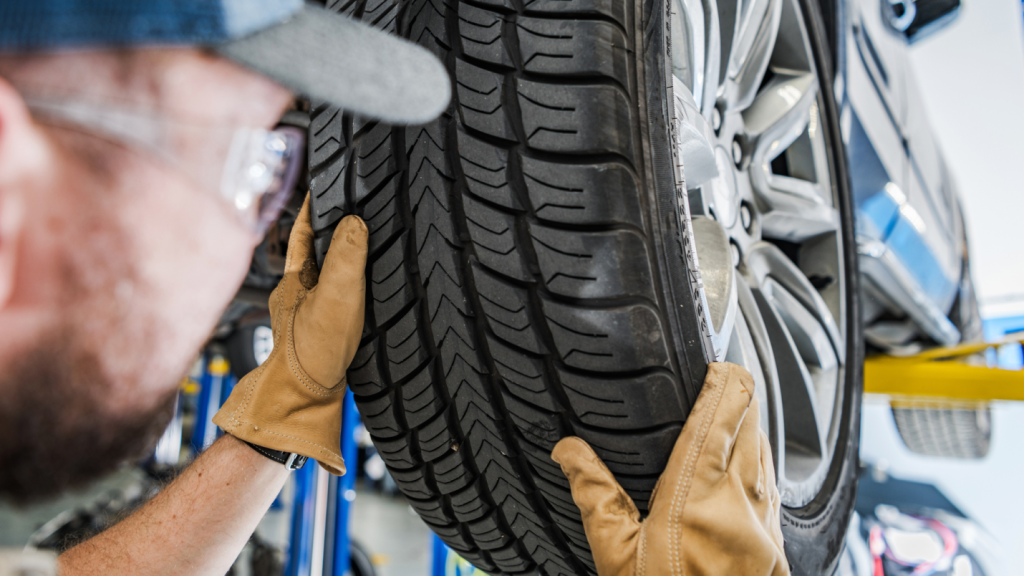Off-roading offers the thrill of exploration, the challenge of tough terrain, and the satisfaction of testing your vehicle’s limits. But before you leave the pavement behind, your tires deserve a thorough inspection—because they’re the first line of defense between your vehicle and whatever the trail throws your way.
Even the most capable 4×4 won’t get far on compromised or improperly prepared tires. So before you hit the trailhead, take time to go through this essential checklist to ensure your tires are ready for the adventure ahead.
1. Tread Depth and Pattern Condition
Your tire’s tread is what gives you grip on everything from rocky climbs to muddy passes. Check the depth using a tread gauge or the old penny trick (if you can see all of Lincoln’s head, it’s time to replace the tire).
Beyond depth, inspect the overall condition of the tread. Are there any signs of uneven wear, chunking, or damage from past use? Off-road driving is especially hard on tread blocks, which can chip or wear prematurely if your tires aren’t suited to the terrain.
A good rule of thumb: If your tires look like they’re barely hanging on during a driveway inspection, they’re not going to fare well under real trail conditions.
2. Sidewall Integrity
Sidewalls often take a beating off-road. Sharp rocks, roots, and ruts can slash or puncture tires if they aren’t tough enough. Before heading out, inspect the sidewalls for visible cuts, bulges, cracks, or scuffs that go beyond surface damage.
Even small weaknesses in the sidewall can become catastrophic failures under the stress of low-pressure off-roading or rough terrain. If you spot any deep gashes or bubbles, swap that tire out before it strands you miles from the nearest tow.
3. Tire Pressure (and Plans to Air Down)
Tire pressure affects everything from traction to comfort on the trail. Lowering your tire pressure—or “airing down”—expands the tire’s contact patch, giving you more grip and a smoother ride over rocks and ruts.
However, airing down without a plan can be risky. Before you go:
- Know your vehicle’s ideal off-road PSI based on tire size and terrain.
- Bring a reliable tire pressure gauge.
- Make sure your tires are rated for the low PSI you plan to run.
- Pack an air compressor or plan a way to air back up before returning to pavement.
If you skip this step, you’re either running with too much pressure and losing traction—or airing down without being able to safely re-inflate.
4. Tire Type and Suitability for Terrain
Not all tires are created equal, and not all trails are the same. Are you driving through sand dunes? Crawling rocks? Tackling forest trails after rain? Each environment favors a different kind of tire.
- All-Terrain (AT) tires offer solid versatility across multiple trail types and road use.
- Mud-Terrain (MT) tires excel in soft surfaces but can be noisy or less efficient on-road.
- Hybrid tires bridge the gap but still lean toward more aggressive trail capability.
Make sure the tires mounted on your rig are designed for the trail ahead. If you’re still rolling on stock street tires, it’s worth upgrading to purpose-built 4×4 tires before venturing into anything remotely technical.
5. Tire Age and Manufacturing Date
Even if your tires “look” fine, rubber degrades over time. Exposure to sunlight, fluctuating temperatures, and moisture causes the material to become brittle and less flexible—a dangerous mix for off-road use.
Check the DOT code on the sidewall, which includes the week and year of manufacture (for example, “3419” means the tire was made in the 34th week of 2019). Most manufacturers recommend replacing tires after 6 years, regardless of tread depth, especially for off-roading applications.
A tire that’s too old might crack under stress or fail without warning.
6. Spare Tire Readiness
Your full-size spare tire should never be an afterthought. It needs to be just as trail-ready as the four on the ground. Before heading out, check:
- Is the tread on your spare still viable?
- Is it properly inflated?
- Are the lug nuts, jack, and tools accessible?
Bonus points if your spare matches the tire type and size currently on your vehicle—especially if you’re running specialty off-road tires that aren’t easily replaced.
7. Wheel Alignment and Torque Settings
Misaligned wheels don’t just mess with steering—they wear your tires unevenly and can cause pulling or drifting on uneven surfaces. It’s wise to get a quick alignment check if you’ve recently lifted your vehicle, changed tires, or noticed odd handling.
Also, ensure your lug nuts are properly torqued to spec. Over-tightened or loose lug nuts can lead to wheel damage or unsafe driving conditions, especially when subjected to off-road forces.
Before every trail run, your tires deserve attention—not just for safety, but for performance. Checking tread, sidewalls, pressure, and compatibility can be the difference between a successful day on the trail and a frustrating breakdown in the middle of nowhere.
Investing in quality 4×4 tires and maintaining them with diligence ensures every off-road trip starts (and ends) on solid ground.
You may also like
-
Expert Assessment of Fuel Cap Locking Mechanisms and Their Reliability
-
Complete Guide on Ford Mustang Performance Maintenance
-
Luxury Car Rentals for Stunning Clearwater Coastline Photoshoots
-
Singapore Scrap Car Guide: Get Maximum Value From Your Vehicle
-
Choosing the Right Service for Your Car’s Lug Bolts: When to Seek Professional Help

